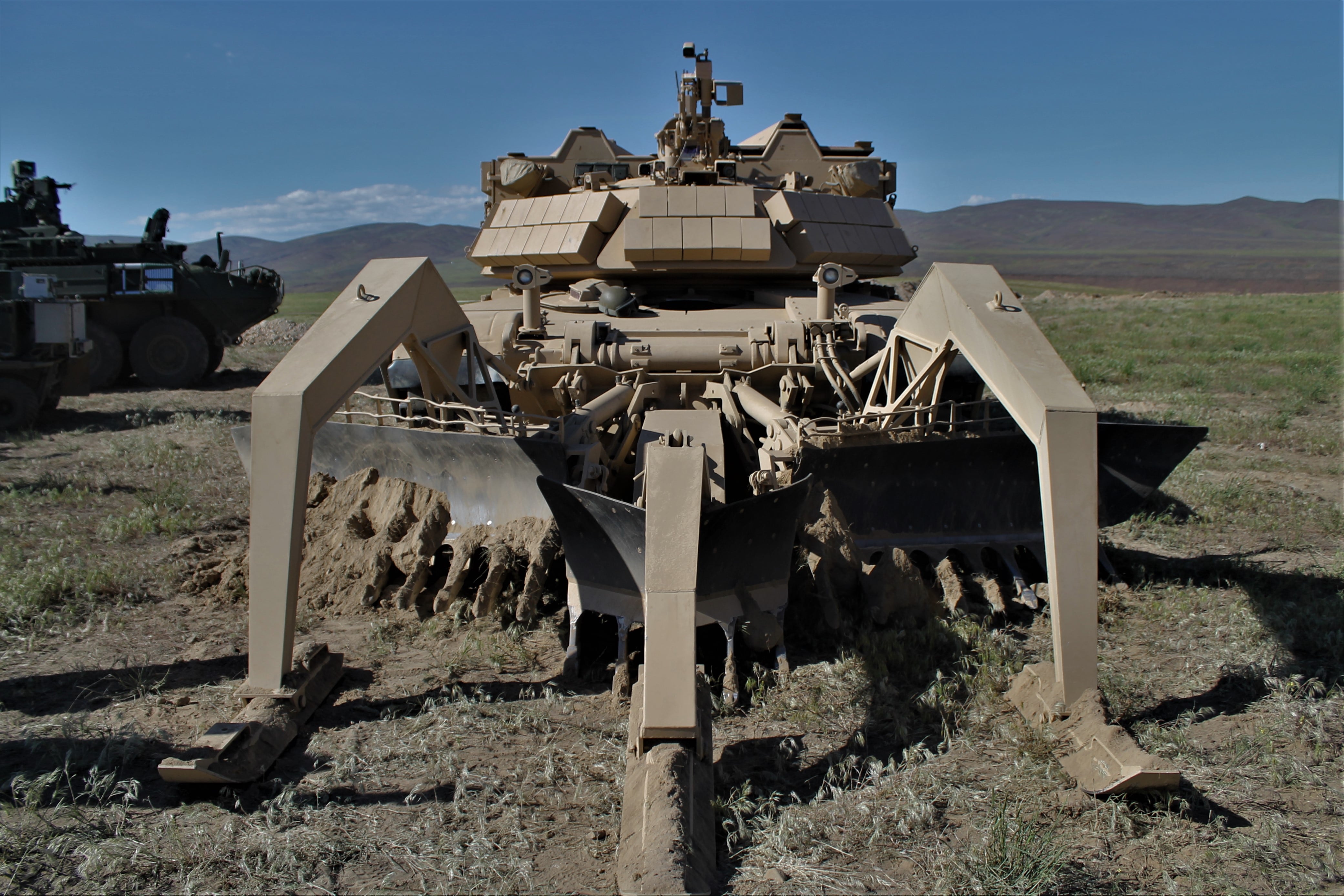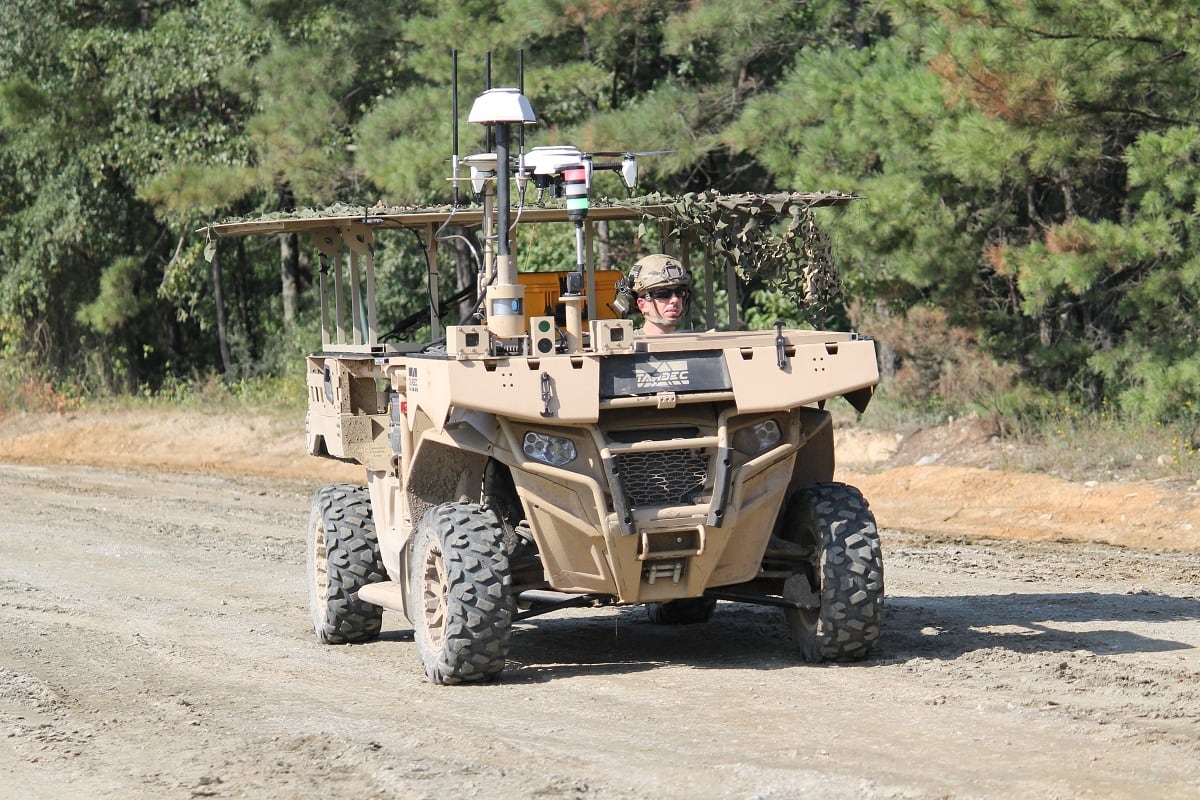LONDON — The proliferation of armed ground robots at recent defense trade shows indicates the U.S. military as well as its allies and partners are warming to the idea of sending such platforms onto the battlefield — but that comes with its limits.
Russia has used armed drones on the battlefield, testing the capability in Syria, for instance. But the U.S. Army has for years resisted the idea of arming unmanned ground vehicles; the service is yet to engage in any development programs that would progress the fielding of an armed robot.
But as it looks at a fleet of robotic combat vehicles for the next-generation of modernized systems, the Army is eyeing the utility of sending armed drones, rather than soldiers, against enemies.
But it’s unlikely the robots would be autonomous. Instead, they’d be remotely controlled by a human. In the case of a recent Raytheon-Lockheed Martin test, where the team fired a Javelin missile from an unmanned ground vehicle on U.S. soil, the UGB was remotely controlled.
“Autonomous weaponry is a bridge too far at the moment, but the flexibility to engage a target without exposing a vehicle to counter-fires is driving a lot of the armed unmanned systems and loitering munition concepts,” James Tinsley, a managing director at Avascent, told Defense News at the DSEI defense trade show in London.
The comfort level with armed ground robots is apparent by the sheer number of systems on the showroom floor, compared to recent years in the international trade show circuit.
RELATED

Raytheon and Lockheed announced at DSEI that their team demonstrated at Redstone Arsenal, Alabama, the ability to fire a Javelin anti-tank missile from an Estonian-built unmanned, tracked ground vehicle using a Norwegian-manufactured remote weapons station.
The unmanned ground vehicle, or UGV, was the Titan, developed by Qinetiq North America and Milrem Robotics, a company Raytheon selected while visiting a trade show in Paris the year prior.
And Milrem’s Themis system was all over DSEI with other defense contractors systems’ integrated onto the platform. It appeared, for instance at the Kongsberg booth with the company’s Protector remote weapon system.
And Kongsberg’s Protector — which makes firing a munition from a robot possible — was featured on a number of systems, including Qinetiq’s Titan UGV.
At the Milrem booth, Themis was sporting an FN Herstal remote weapon station.
Milrem is likely to target the U.S. Army’s Robotic Combat Vehicle-Light effort that will look for a flexible platform to take on a number of payloads to carry out a variety of mission sets envisioned for a future fleet.
Qinetiq and Milrem had entered Titan in the Army’s Squad Multipurpose Equipment Transport competition, but did not make it to the final round. The team has also demonstrated the Titan with the British Ministry of Defence.
On the larger size, German defense company Rheinmetall brought several variants of its Mission Master UGV to include a cargo and surveillance version, with little deployable Black Hornets integrated onto the front of the vehicle. But its armed version stood out at the company’s booth, with two Thales-made rocket launchers that fit eight 70mm rockets each.
The armed system was recently qualified on a range in South Africa, Artem Azbukin, Rheinmetall’s project coordinator for electronic solutions in its Canada office, told Defense News.
The system is capable and qualified to shoot guided missiles and can be mounted with 50mm weapon systems, Azbukin said, adding that the firm can install a 7.62- or .50-caliber machine gun or a 40mm grenade launcher.
The vehicle can also accommodate loitering munitions in a six-tube launcher. Loitering munitions were also spotted on several small, light combat vehicles and UGVs at DSEI.
The company plans to introduce Mission Master in the U.S. at the Association of the U.S. Army’s annual conference in Washington next month, and it will participate in a series of trials with the Army next year, Azbukin said.
RELATED

There are several variants of the UGV: cargo; surveillance; protection; rescue; communications relay; chemical, biological, radiological and nuclear detection; and firefighting.
The vehicles have the capacity to run autonomously for eight hours, travel 30 kph and run very quietly, Azbukin said.
For the U.S. market, Rheinmetall anticipates an initial focus on the cargo capability to make soldiers more efficient with a goal of using the systems for the last mile of resupply.
The British MoD also plans to evaluate Rheinmetall’s vehicle next year following the U.S. activity.
The German Army finished trials of the vehicle last week, and the Royal Netherlands Army also took the vehicles for a spin. The Netherlands intend to buy a couple of units to develop concepts of operation, Azbukin said.
Poland will begin trials of the system next week, he added.
Rheinmetall is under contract with one undisclosed customer.
Jen Judson is an award-winning journalist covering land warfare for Defense News. She has also worked for Politico and Inside Defense. She holds a Master of Science degree in journalism from Boston University and a Bachelor of Arts degree from Kenyon College.








